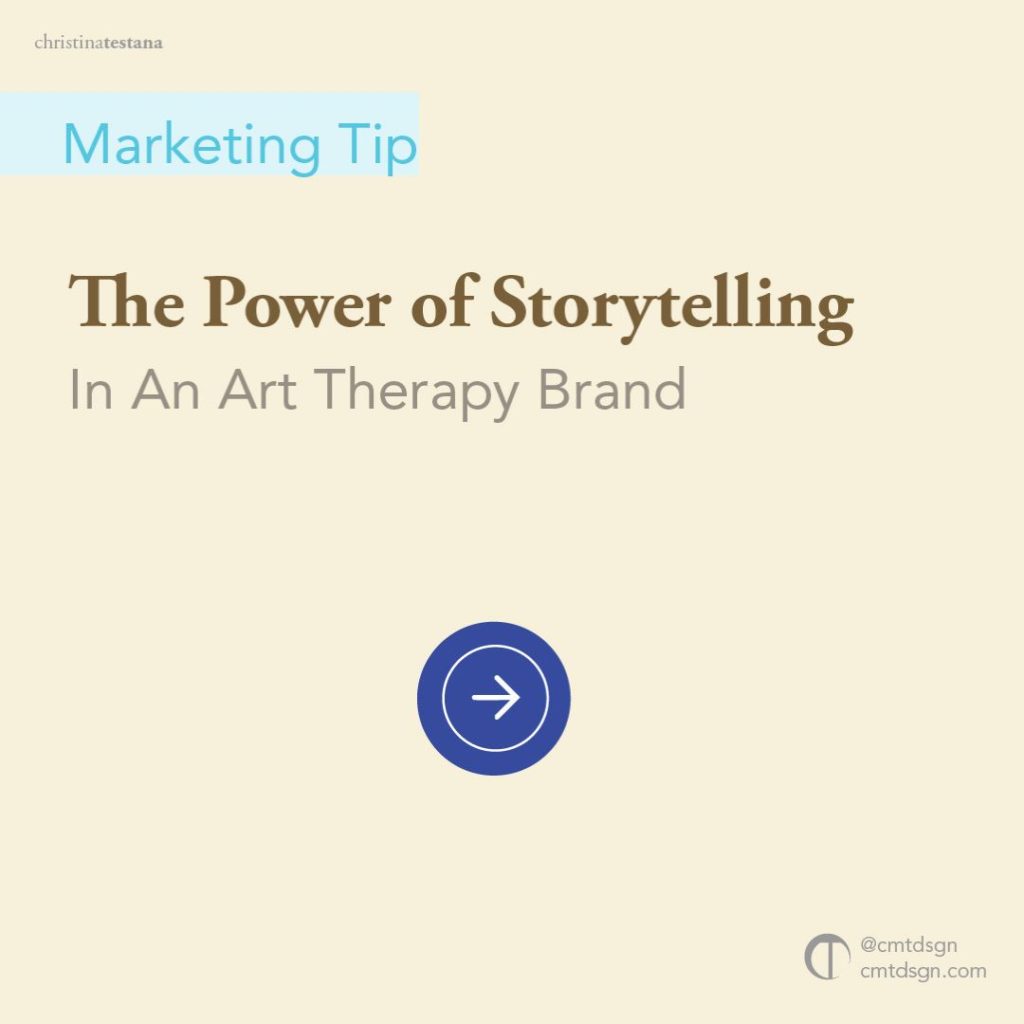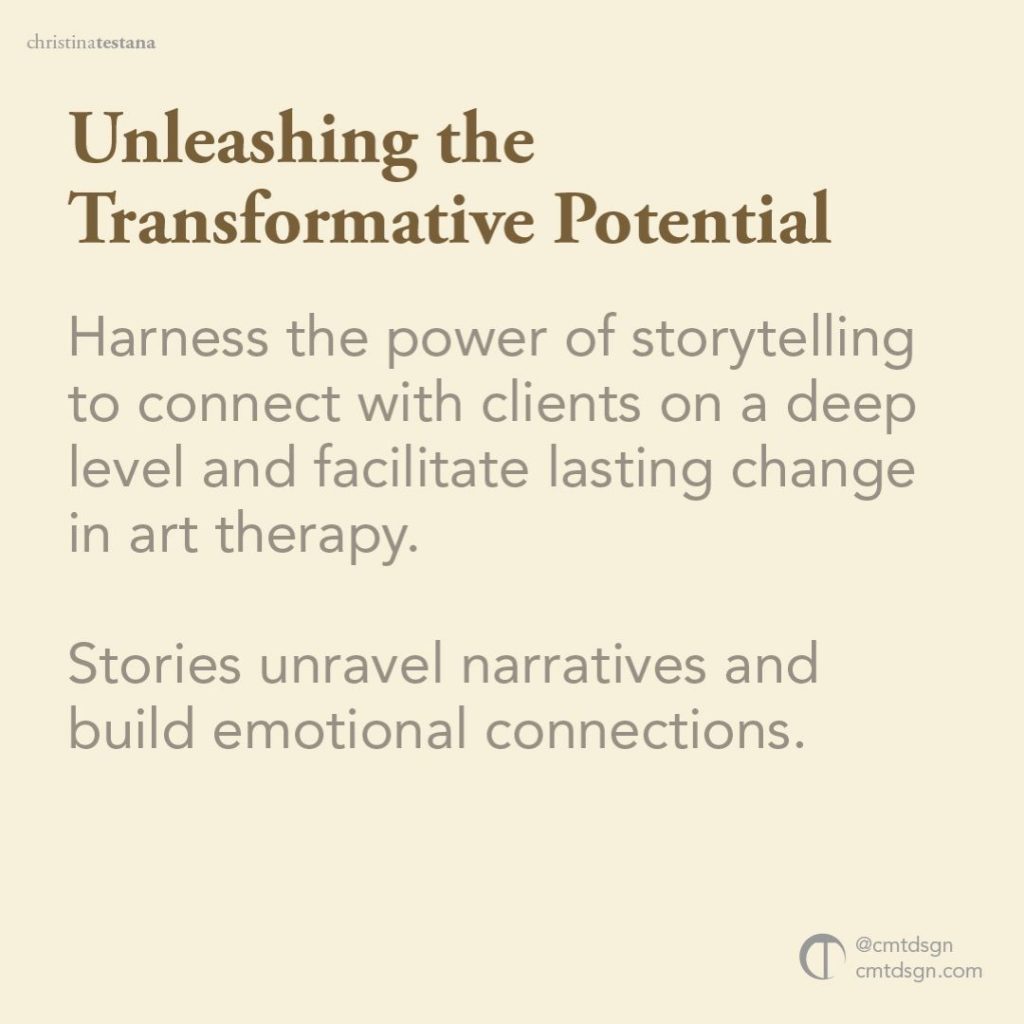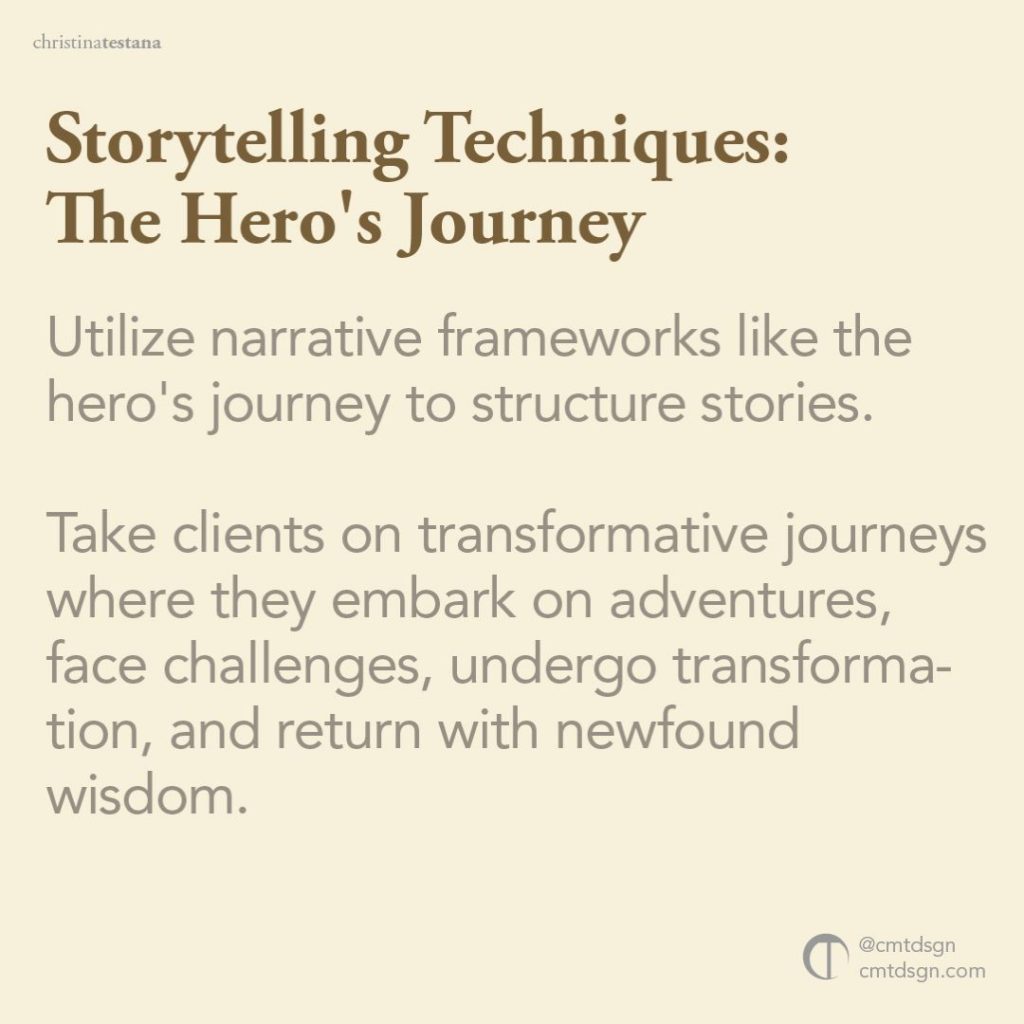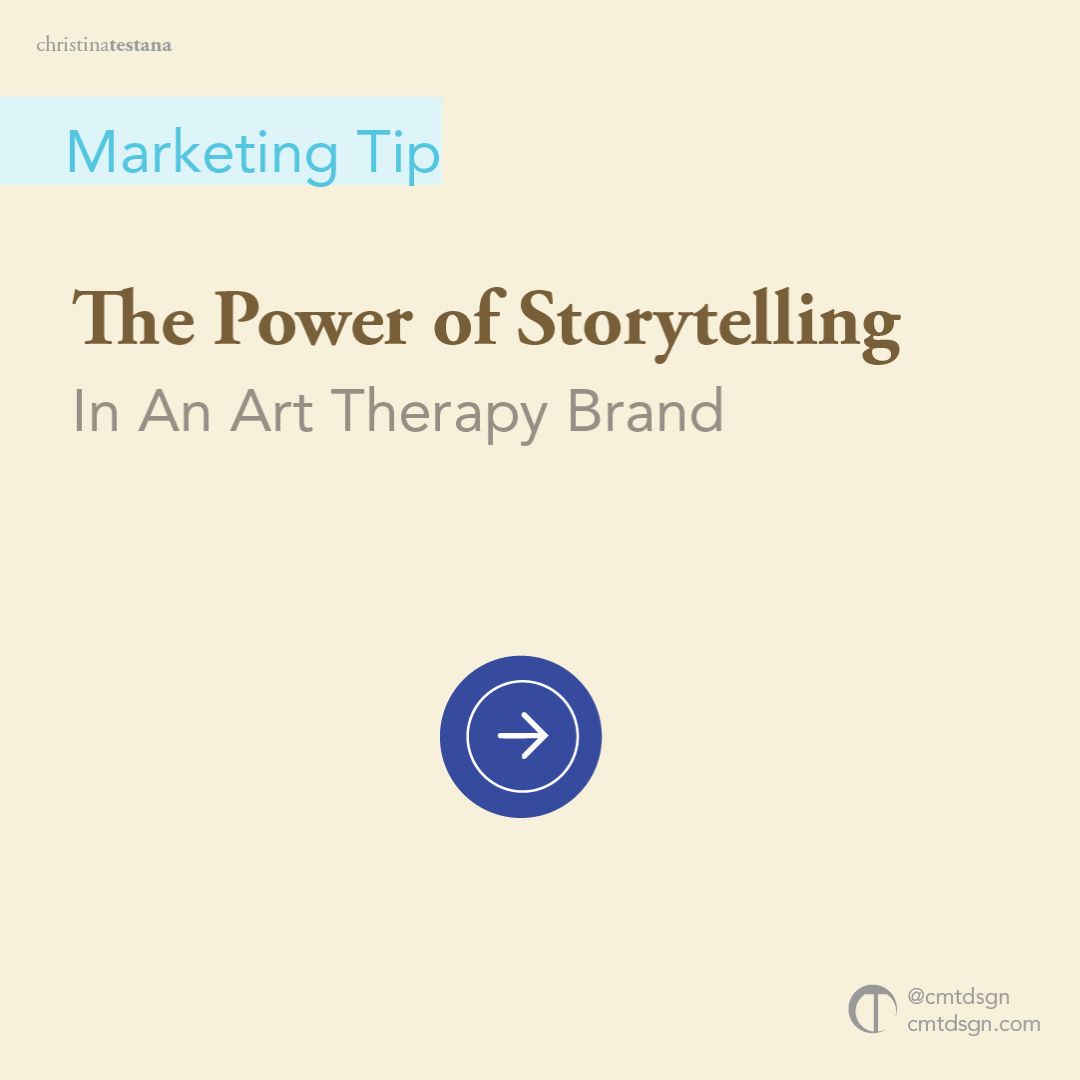Imagine stepping into a world where emotions intertwine with art, creating a safe space for healing, growth, and transformation. As art therapists, you have the unique opportunity to harness the power of storytelling and connect with your clients on a deep level. The art of storytelling in a art therapy brand not only allows you to unravel narratives but also enables you to build deep emotional connections that can lead to lasting change.
Have you ever wondered how stories can be instrumental in nurturing these connections?
How can we use the art of storytelling to create a bridge between your clients’ inner worlds and their therapeutic journey?
In today’s reading, I will explore the transformative potential of storytelling in an art therapy brand and uncover techniques that can help you enhance engagement, empathy, and emotional resonance with your clients.
Whether you are an art therapist seeking to start out on your entrepreneurial journey or a budding mental health professional ambitious to step it up to make your mark, this post will serve as a guide to unlock the power of storytelling in a art therapy brand. I will dive into practical strategies, share real-life success stories, and provide valuable insights to help you navigate the intricate terrain of art therapy.
Stick around on this captivating journey as I unravel the secrets of connecting with clients through the art of storytelling. Let’s set sail on a path that will empower you to find direction, build a loyal community that values your expertise, and bring positive change to your art therapy business. Are you ready to ignite the creative flame and witness the transformative impact of storytelling in art therapy? Let’s dive in!
The Power of Storytelling in Art Therapy

Stories are the source of captivating hearts since early caveman times. These narratives were engaging and inspiring to others, making them cry, laugh and think about things. Not only that but it helps to educate people by helping to painting the picture for your people so they understand you and the work you do. The best part stories get people to take inspired action towards supporting a cause or joining a movement.

How storytelling enhances the therapeutic process
The therapeutic process is a complex concept for normal people to understand. The best way to illustrate and simplify the concept is using stories. Storytelling brings clarity in a metaphoric approach and immersing the listener into the story to embrace the character and their feelings. Doing this gives the client a better idea of what to expect from you and see the value you bring.

Engaging the client’s imagination through stories
The two major ingredients that making a great story is the use of metaphors and symbolism in stories. Use your creativity to compare art therapy to something that the client can easily relate to and feel much more familiar with.
It can be an object, an environment, or a person but make sure that its something they engage with everyday. Play with the client imagination get them to visualize when you are creating and telling the story. This is the best way to get them engaged and use their imagination to bridge gaps in understanding art therapy.
Stories allow the opportunity to be placed in an imaginary world that allows them to explore, and even self-reflect through the eyes of the character. It’s an amazing phenomenon that triggers excited, sadness, nostalgia, and many more. All the feels! Doing this in your marketing will change the perception in how people view art therapy.

Nurturing empathy and understanding
Every story has a main character that you follow through the story. As the reader you understand begin to understand the character as the story flows. Knowing how they express themselves and process emotions. The client can pick up on these factors and collectively see how it is similar to how they are process in their current feelings in reality. This comparison helps to clearly communication to the art therapy the solid more concrete feelings their experiencing.
The stories you craft for your art therapy brand must be a shared narrative. This means that they should be relatively similar to your ideal clients current experiences. You want the client when reading the story to see themselves in the character. This establishes connection and relatability. The closer you are in your stories to their current experience the better the client will take action. Keeping the stories similar to the client’s issue, gives the client and idea of how you can help them and the connections art therapy has in managing this problem.
Techniques for Effective Storytelling in your Art Therapy Business
Stories following certain frame works and tactics to get the message across and for the story to flow properly. Let along even establish area where they want to the reader to react. It’s all planned out strategically.
Look at Star Wars for example, they used the Hero’s Journey, also known as the monomyth, as a storytelling framework to tell its story. The Hero’s Journey is a narrative structure that involves a hero who embarks on an adventure, faces various challenges and trials, undergoes personal transformation, and ultimately returns home with newfound wisdom or a reward. This framework, popularized by Joseph Campbell, follows a sequence of stages such as the Call to Adventure, Meeting the Mentor, Crossing the Threshold, Tests and Allies, the Ordeal, and the Return with the Elixir.

Creating compelling narratives
These stories that you create for your business needs to attract clients to read them. Not every story fits every person. It’s up to you to have an idea of what your ideal client would want to read and hear. This will attract them to want to read more and indulge in the story. Here are some ways to get people to dive deep into your story.
Choosing the right story for the client
Remember you are not trying to speak to everyone. You have to speak to your ideal client the one that you identified. (Check out one of my past blog posts on: _____ if you haven’t cleared that up). Once you know your ideal client inside and out. You understand their background, interests, and challenges. It’s time to pinpoint the common themes they face in relevance to the clients experiences. These common themes will be your focus on creating a story on one of these themes. One theme per story is key for a great story. Make not of relevant situations that the client experiences and see where it can connect with one of your past experiences. By identifying these connections, you can create a deeper emotional impact and relevance in the storytelling process.
Culture plays a significant role in shaping our experiences and perspectives. When choosing stories, consider the cultural background of your clients and find narratives that hold cultural significance. This can help them feel understood and validated, nurturing a sense of connection. Additionally, take into account their individual preferences, values, and personal history. Tailor the story to include elements that hold personal meaning for the client, making the storytelling experience more impactful and relatable.

Using sensory elements in storytelling
In any story you may have read, did you notice that the author plays on sensory experiences? This is a tactical way to get the reader even deeper into your story and character. It’s about the details in a specific moment and its normally when you want to emphasize something.
For example: Let’s say the character was in a frozen escape room. One the character is on a time limit, so in this scenario the author would dive deeper into over exaggerating the feelings of the character in that moment in time. The character’s heart rate is rising, and there hair is standing up on their arms, there pupils shrink in fear, all these types of descriptors.
You see in that short description alone you start to get very attached to the story and begin to feel the same feels as the character. This is how you need to approach storytelling to get a response out of the reader. Tapping into describing the environment, sounds, or maybe even feelings of textures. All this plays a part in bringing the client into the story. These are the tactics to enhancing emotional connection and triggering an emotional response and relation to the character or moment.
Incorporating art into storytelling
Art and storytelling are a perfect meal for collectively working to together to communicate a message.
Visual storytelling techniques
This is a great space for your brand visual identity to showcase your story through visuals. Utilizing colours, imagery, fonts, illustrations, graphics, icons, animation, infographics, textural fabrics, furniture, to the actual architectural space.
With all of these elements it’s essential to bring your brand story to life with the use of these elements to represent your story. They show great symbolism and something tangible in reality for the clients to connect with and connect back to the story.
Another cool way to bring your story to life is through the use of animation in telling your story on social when you are building out content. You will be telling your story on a social media post and why get playful with it.

Therapy Storytelling Techniques Using A Framework To Get Started
As mentioned earlier in this post, I spoke about the hero’s journey framework to write great stories.
Here is the break down of that Story Framework:
1. The Ordinary World
- Introduce the protagonist in their everyday life and establish their normal routine.
2. The Call to Adventure
- Something disrupts the protagonist’s ordinary world, presenting them with a challenge or opportunity.
3. Refusal of the Call
- The protagonist initially hesitates or resists the call to embark on their journey due to fear, doubt, or other reasons.
4. Meeting the Mentor
- The protagonist encounters a mentor figure who provides guidance, advice, or assistance.
5. Crossing the Threshold
- The protagonist decides to leave their familiar environment and enters a new and unfamiliar world.
6. Tests, Allies, and Enemies
- The protagonist faces a series of trials, meets allies, and encounters enemies as they progress on their journey.
7. Approach to the Inmost Cave
- The protagonist reaches a crucial point in their journey, preparing for a significant challenge or confrontation.
8. Ordeal and Reward
- The protagonist faces their most difficult challenge, undergoes a transformation, and emerges stronger or wiser.
9. The Road Back
- The protagonist begins their journey back to their ordinary world, often with a newfound understanding or mission.
10. Resurrection and Return with the Elixir
- The protagonist faces a final test, overcomes it, and brings back something valuable or transformative to their ordinary world.
Here is another example:
4 elements that make a great story by Kindra Hall. If you ever get the chance read her book called Stories That Stick.
Kindra Hall, a storytelling expert, emphasizes four key elements that make a great story:
- Authenticity: A great story is rooted in authenticity. It connects with the audience on a genuine and emotional level, making them feel like they are experiencing something real.
- Relatability: A great story is relatable to the audience. It taps into common human experiences, challenges, and emotions, allowing people to see themselves in the story and connect with it on a personal level.
- Emotion: A great story evokes emotions. It elicits a range of feelings in the audience, whether it’s joy, sadness, excitement, or empathy. Emotion is a powerful tool for engaging and captivating listeners.
- Purpose: A great story has a clear purpose. It communicates a message, teaches a lesson, or inspires action. It has a deeper meaning or takeaway that resonates with the audience and leaves them with something to ponder or act upon.

In conclusion…
Storytelling holds immense power in the realm of art therapy, enabling art therapists to nurture deep emotional connections with their clients. By integrating storytelling techniques into their practice, art therapists can enhance client engagement, empathy, and emotional connection.
Storytelling in art therapy allows therapists to engage the client’s imagination, creating a metaphorical and immersive experience that helps clarify and simplify the therapeutic process. Through stories, clients can better understand what to expect from art therapy and see the value it brings.
Moreover, storytelling nurtures empathy and understanding by presenting relatable characters and experiences. When clients see themselves reflected in the stories, it establishes a connection and enhances communication about their own feelings and challenges.
To effectively use storytelling in an art therapy brand, creating compelling narratives is essential. Choosing the right story for the client, based on their background, interests, and challenges, allows for an emotional response. Incorporating sensory elements and visuals further enhances the storytelling experience, bringing the client deeper into the narrative.
Adopting a storytelling framework, such as the hero’s journey, provides a structure for creating engaging stories that captivate the audience. By following the stages of the hero’s journey, art therapists can craft narratives that take clients on transformative journeys, ultimately leading to mutual understanding.
In the end, the power of storytelling in an art therapy brand lies in its ability to connect emotionally with clients, ignite their imagination, and inspire positive change therapy. By harnessing this power, proactive art therapists can navigate the intricate terrain of art therapy, building loyal community, and make a lasting impact on the lives of their clients. So, let your creativity soar, unlock the potential of storytelling, and set sail on a transformative journey in creating value-driven therapy.
